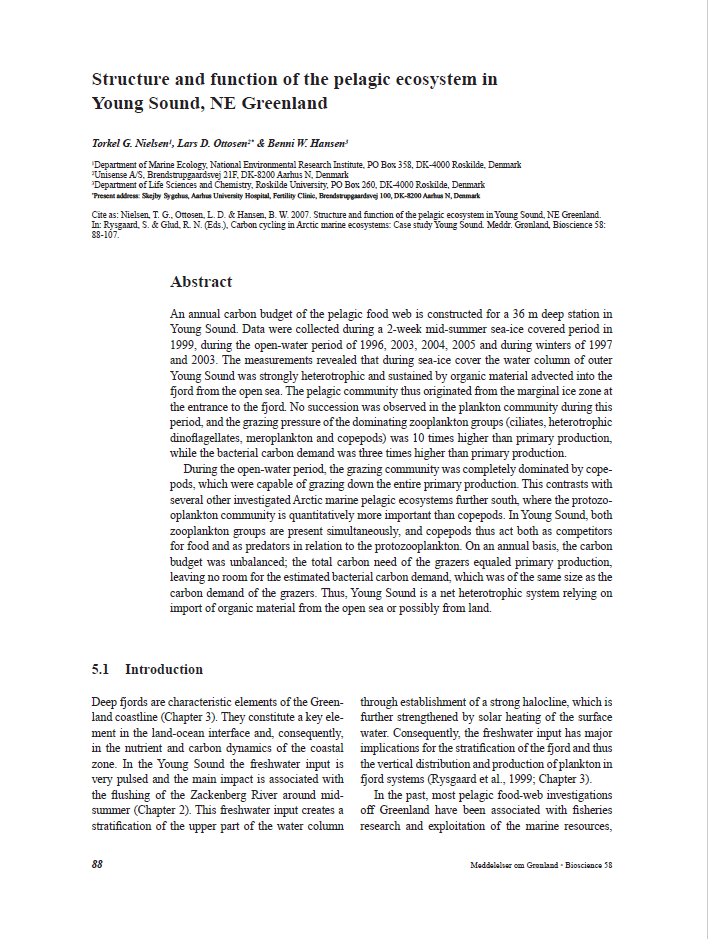Structure and function of the pelagic ecosystem in Young Sound, NE Greenland
DOI:
https://doi.org/10.7146/mogbiosci.v58.142642Abstract
An annual carbon budget of the pelagic food web is constructed for a 36 m deep station in Young Sound. Data were collected during a 2-week mid-summer sea-ice covered period in 1999, during the open-water period of 1996, 2003, 2004, 2005 and during winters of 1997 and 2003. The measurements revealed that during sea-ice cover the water column of outer Young Sound was strongly heterotrophic and sustained by organic material advected into the fjord from the open sea. The pelagic community thus originated from the marginal ice zone at the entrance to the fjord. No succession was observed in the plankton community during this period, and the grazing pressure of the dominating zooplankton groups (ciliates, heterotrophic dinoflagellates, meroplankton and copepods) was 10 times higher than primary production, while the bacterial carbon demand was three times higher than primary production.
During the open-water period, the grazing community was completely dominated by copepods, which were capable of grazing down the entire primary production. This contrasts with several other investigated Arctic marine pelagic ecosystems further south, where the protozooplankton community is quantitatively more important than copepods. In Young Sound, both zooplankton groups are present simultaneously, and copepods thus act both as competitors for food and as predators in relation to the protozooplankton. On an annual basis, the carbon budget was unbalanced; the total carbon need of the grazers equaled primary production, leaving no room for the estimated bacterial carbon demand, which was of the same size as the carbon demand of the grazers. Thus, Young Sound is a net heterotrophic system relying on import of organic material from the open sea or possibly from land.

Downloads
Published
Issue
Section
License
Coypyright by the authors and the Commision for Scientific Research in Greenland / Danish Polar Center/Museum Tusculanum Press as indicated in the individual volumes. No parts of the publications may be reproduced in any form without the written permission by the copyright owners.

